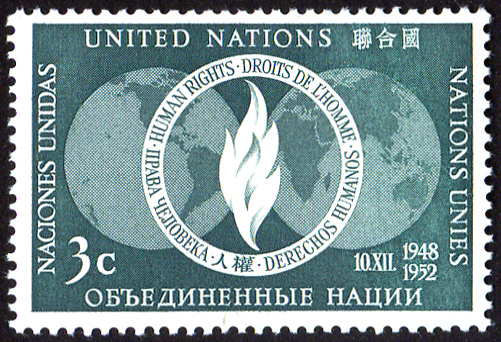Health Care Costs: Statistics And Solutions
HEALTH CARE COSTS: STATISTICS AND SOLUTIONS (ISSUE 89)
By Diane Gold
 Health care costs make it difficult or impossible for all Americans to afford the services they deserve. After surprising a young college student friend of mine from India over the fact that everyone in the United States does not have all the necessities, I decided to look into health care costs.
Health care costs make it difficult or impossible for all Americans to afford the services they deserve. After surprising a young college student friend of mine from India over the fact that everyone in the United States does not have all the necessities, I decided to look into health care costs.
Health care costs make it difficult or impossible for all Americans to afford the services they deserve. After surprising a young college student friend of mine from India over the fact that everyone in the United States does not have all the necessities, I decided to look into health care costs.
Isabelle Wachsmuth of the Evidence Informed Policy Network at the WHO (World Health Organization) strategizes by saying,
“Solutions cannot be fragmented [to be effective].
“The number of initiatives in health are multiplied exponentially and are growing without coherence and convergence and continue to strengthen the various conflicts of interest and competition between the different actors. It is therefore not the reflection of collective and collaborative intelligence, which [is] necessary for the survival of humanity.”

This powerful statement recognizes the need for collaboration and the limitation of focus on competition. Our article, today, will look at the United States, some statistics and suggestions for possible reduction in cost. Ponder this: could pooling the resources of all health care organizations lower health care costs?
ACTION THOUGHT
So let’s give this quote some serious thought and take note. We could share our discoveries, from now on, so that everyone can benefit from each of them. Unfortunately, sometimes, keeping our information proprietary so that we, our company and our country can benefit, economically and politically, is part of our employment contract or ego driven. It often slows down or disables access of the scientific magic discovered to those who can’t pay for it at the proprietary price.
HOW MUCH WE SPEND
According to the National Center For Healthcare Statistics, NCHS, part of the Center For Disease Control And Prevention (CDC), which falls under the domain of the US Department Of Health And Human Services; as of 2010, we, Americans, spent $2.6 Trillion for health care. That’s $8,402 per person. This doesn’t mean each individual took $8+ thousand dollars out of her pocket to pay for health care. It also doesn’t mean that some of us haven’t paid one-and-a-half times for individual health insurance cost alone, not including the health care and prevention services we have to pay for, over and above what the insurance covers. And, if we include dietary supplements as part of prevention, rather than as part of our food budget, we can add between $50 and $100 per month per person.
WHAT OUR SPENDING MEANS
We spend 17.6% of our money on health care according to the NCHS 2012 report of 2010 stats. This means that, if we make $20,000 a year, we spend 17.6% $3,520, on health care, right? And that if we make $100,000, we also spend 17.6%, $17,600, on health care, right? It is obvious that this is not possible with our present system. We are not billed on a percentage of what we earn basis. We are billed based on the national accepted rates for services. So this means that, according to the national average, if we make $20,000 or $100,000 per year, we pay $8402 for health care.
This ends up being 42% for the person who makes $20,000 and 8.5% for the person who makes $100,000. What’s wrong with this picture?
HEALTH CARE, THE HUMAN RIGHT
 Although about 1/6 of our income in the United States goes to health care, how can we maintain that health care is a human right if some people can’t afford it? Or do we consider health care a privilege? And, if we step off our continent for a moment and look at the fact that the amount I pay for health insurance per month could pay for the health care of 15 people in most African nations for the same month, or in the Congo or Burma, for 45 people.
Although about 1/6 of our income in the United States goes to health care, how can we maintain that health care is a human right if some people can’t afford it? Or do we consider health care a privilege? And, if we step off our continent for a moment and look at the fact that the amount I pay for health insurance per month could pay for the health care of 15 people in most African nations for the same month, or in the Congo or Burma, for 45 people.
Yes, we have public assistance programs for those who qualify. What about the many who have more than $2,000 in the bank so they don’t qualify? (This requirement may change as of January 1, 2014).
OUR MEDICINE
We have the best medicine in the world, the best clinics, the best medical advisors, the best equipment. The cost for access is large, so not everyone has access. Shouldn’t they?
COMPARED TO OTHER COUNTRIES
The United States has the highest percentage of money of any country spent on health care. We pay $8402 per year per person, on average. This is 17.6% of our purchasing power. Other developed countries come in at 9-11%.
DIETARY SUPPLEMENTS
According to National Health And Nutrition Examination Services, a part of the CDC, in a measure of 5,000 random people in the United States over 20 years old from 15 communities; a 2004 study showed that 52% use supplements, 35% take multi-vitamin/multi-mineral supplements., 24% take antacids. That could indicate a country full of stress or eating issues and diligent calcium supplementation at the same time.. In all categories, the over 60 set uses more supplements than any other age group.
The bottom line, though, is that the supplement industry brings in $20 billion a year. Would food education starting in kindergarten reduce our need and thus reduce our spending? Or could food education increase our use of supplements and reduce our need for medical treatments?
POSSIBLE ACTION STEPS FOR CONSIDERATION
I am certainly no expert in the field, yet I care deeply that health care be a human right to every person. I have compiled a list of possible action steps that could reduce health care cost dramatically.
 1) Create an institute whereby each member commits to donate 10% of her time at the job she currently has to people who cannot afford medical care or treatment they don’t rack up a life-long medical debt. Members would include general doctors, specialists, surgeons, nurses, clerks, radiologists and hospital staff.
1) Create an institute whereby each member commits to donate 10% of her time at the job she currently has to people who cannot afford medical care or treatment they don’t rack up a life-long medical debt. Members would include general doctors, specialists, surgeons, nurses, clerks, radiologists and hospital staff.
2) Write government legislation that requires physicians, using allopathic, osteopathic or Chinese medicine to give 10% of their time to people whose insurance does not pay for services or are not on public assistance with income levels under a certain income level determined by number in household for one year of their first 10 years in that job. Encouragement to continue this act of giving would be strong, but it would not be required.
3) Create an new association of hospitals and medical facilities that would deem as a requirement for employment 10% of an employee’s time at no compensation for the first year or more.
4) Restructure the preventive services for which insurance companies reimburse. I, personally, have had two careers, music therapy and tai chi instruction, that are not yet insurance reimbursable. Each of these modalities makes a biological difference, in many cases. If these methods were listed as accepted modes of prevention, much money on pharmaceuticals, recurring anxiety, balance issues and residential care could be saved.
5) Teach the benefit of preventive services, whether they be mind/body, exercise or nurturing, from an early age. Consider requiring continuing education credits necessary to renew our driver’s license. These continuing education credits would reflect time spent utilizing a preventive modality, any kind. Doing prevention reduces sickness; no one argues with this one.
6) Create a network where preventive service providers agree to donate 10% of their services at no charge.
7) Create a group of real estate moguls who will donate 10% of their profit from land that houses medical facilities for the first year or ongoing.
8) Create a group of hospitals that donate 10% of their facility revenue.
9) Write government regulation that requires property owners to donate 10% of their profit from properties that house medical facilities for the first year or ongoing.
10) Create a group of fitness clubs/gyms who will donate 10% of their membership to people who cannot pay for their own membership.
 11) Require that any individual who utilizes the 10% plan services donate 10% of her time (if physically able) to tutoring people in literacy or some other crucial skill according to a chart that would equate skills donated with tutoring.
11) Require that any individual who utilizes the 10% plan services donate 10% of her time (if physically able) to tutoring people in literacy or some other crucial skill according to a chart that would equate skills donated with tutoring.
NOTE ABOUT DOCTORS
It is important to consider that, if the fees for doctor services are reduced by regulation, fewer people may want to become doctors and we will have fewer American-born doctors. The doctor population in the United States per 1,000 people (2.4) is under the average (3.1) for member countries in the Organization For Economic Cooperation And Development (OECD) according to a report from PBS NewsHour of October 12, 2012.
Further, tax incentives could be offered for anyone involved in the 10% gifting.
CONCLUSION
 Health care costs are high due to fees for medical personnel, cost of equipment and facilities, intricacies of technology, cost of research. Because we are in the habit of wasting instead of conserving, we spend more than we have to – in time and in money. When we are ill, we like to see beautiful offices, rather than cheaply appointed office space with cracks, old paint and the smell of age. Sometimes, we even equate the ability of a professional staff with the grandeur of an office. As employees, we want to be paid for our work, and we should be.
Health care costs are high due to fees for medical personnel, cost of equipment and facilities, intricacies of technology, cost of research. Because we are in the habit of wasting instead of conserving, we spend more than we have to – in time and in money. When we are ill, we like to see beautiful offices, rather than cheaply appointed office space with cracks, old paint and the smell of age. Sometimes, we even equate the ability of a professional staff with the grandeur of an office. As employees, we want to be paid for our work, and we should be.
If we structure it properly and only 20% of the people involved in the health care world take up one of my suggestions, imagine the avalanche of good will it would create which would cause others to join in. Each of us would contribute, and we could begin to reverse rising costs. We’d be on our way.
The action steps above are an infrastructure of what could be done to control the cost of health care. They would certainly be a solution. The steps that suggest regulation are only food for thought and not meant reduce our right to thrive from profit and since enabling habit change works best through personal choice. The idea is to shift the responsibility of reducing health care costs to all of us.
This process is not going to work if we don’t make a human move. And the purpose of these suggestions is. It is to make us a tiny bit responsible for reducing health costs.
Let’s pick an action step and start now to show that rising health care has a solution.
SPECIAL NOTE
What if every place the action steps mention 10% were replaced with 1% of our time? Now that we entertained 10%, 1% would be easy. We have to step up to make the change. Let it be now.
____________________________________________________________________
FEEDBACK
Please leave a comment and LIKE.
DIANE GOLD, AUTHOR
Diane Gold, Founder of Warriors of Weight, Turning Habits Into Health, is a mentor in tai chi, kung fu and meditation, a music, fitness and stress expert, dedicated mom, studying plant-based nutrition.
She has been in and out of the health care field, as music and recreation therapist to differently enabled adults, as director of creative arts therapy to a day care program and through teaching tai chi and having to explain to people why tai chi is not yet insurance reimbursable. She says,
“The hand of prevention is reaching out to our generation. It is time we grabbed on and took it.
“There is scientific proof that we can diminish our health care costs and ethical concerns if we do not. Let us be diligent on behalf of all people so that we can work to creating available medical treatment through the reduction of health care costs.”







